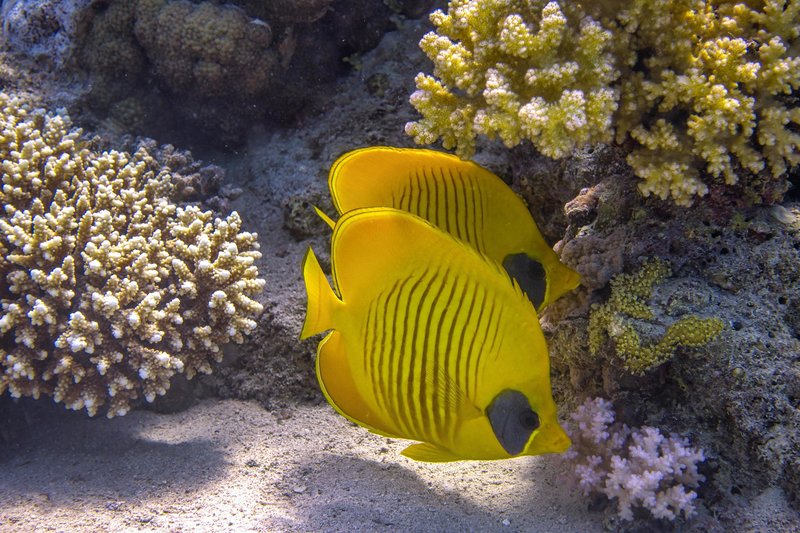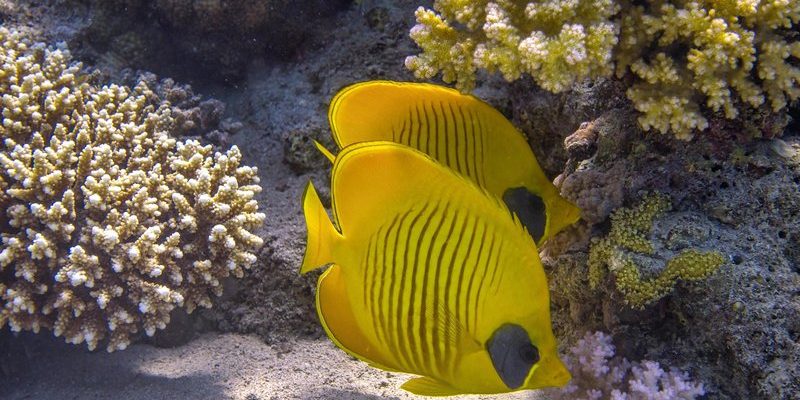
Let’s dive into this topic together. We’ll explore the unique characteristics of butterflyfish, how they interact with coral, and whether they can coexist peacefully in a reef environment. By the end, you’ll have a clearer picture of whether these enchanting fish belong in your underwater haven.
What Are Butterflyfish?
Butterflyfish are small, colorful fish that belong to the family Chaetodontidae. They’re often found in warm, shallow waters of tropical and subtropical oceans. These fish are known for their distinctive shapes and vibrant colors, which can range from bright yellows and blues to striking black and white patterns. They usually measure between 3 to 9 inches long, depending on the species.
One unique feature of butterflyfish is their diet. They primarily feed on coral polyps, small invertebrates, and algae. This feeding behavior is crucial to their survival, but it can raise some questions when it comes to aquarium setups. Can they thrive in an environment where corals are also living and growing?
Coral Reefs and Their Ecosystems
Coral reefs are one of the most diverse ecosystems on the planet. They provide essential habitats for many marine species, including fish, invertebrates, and other sea creatures. The relationship between corals and the creatures that inhabit the reef is intimate and interdependent.
Corals are living organisms, and they rely on tiny animals called zooxanthellae for nutrition through photosynthesis. The health of a coral reef depends on maintaining a balance in the ecosystem. Too many fish that consume coral can lead to detrimental effects on the corals, which in turn can affect the entire reef community.
Butterflyfish and Coral Compatibility
Now, let’s get to the heart of the matter: are butterflyfish reef safe? The answer is a bit nuanced. While these fish are often found in coral-rich environments, their compatibility with coral can vary depending on the specific species of butterflyfish and the coral in your tank.
Here are a few key points to consider:
- Feeding Habits: Some butterflyfish love to nibble on coral polyps and can damage delicate coral species if they are overly aggressive feeders. This is something to keep in mind when choosing tank mates.
- Aquarium Size: The size of your aquarium matters! A larger tank can provide more room for a butterflyfish to establish its territory, which may reduce its tendency to feed on the corals.
- Coral Selection: Hard corals are generally more resilient than soft corals when it comes to butterflyfish. If you already have sensitive corals, you might want to be cautious in introducing butterflyfish into the tank.
Ultimately, some butterflyfish species are considered safer for reef tanks than others. Researching the species you’re interested in is key to ensuring compatibility.
Choosing the Right Butterflyfish Species
Not all butterflyfish are created equal. Some species are more reef-safe than others. If you’re leaning toward adding a butterflyfish to your aquarium, consider these species known for being more compatible with coral:
– C. auriga (Threadfin Butterflyfish): This species is often considered reef safe as it primarily feeds on small invertebrates, leaving corals unharmed.
– C. scavenger (Scavenging Butterflyfish): Known for their unusual diets that focus more on detritus and algae than actual coral.
– C. diphreutes (Longnose Butterflyfish): This species is more likely to nibble on corals but can still thrive while being a bit more cautious around them.
It’s all about doing a little homework. Always ask your local fish store about the behavior of specific butterflyfish species regarding coral to make an informed choice.
Care Tips for Butterflyfish in a Reef Tank
If you decide to introduce a butterflyfish into your reef tank, you’ll want to ensure they not only coexist with corals but also flourish in their new home. Here are some care tips to keep in mind:
1. Tank Conditions:
– Maintain stable water conditions, including temperature, salinity, and pH levels. Butterflyfish thrive in warm waters, around 76-82°F (24-28°C).
2. Filtration and Water Quality:
– A good filtration system is essential. Regular water changes will help keep pollutants low, which is beneficial for both coral and fish health.
3. Diet:
– Provide a varied diet that includes high-quality pellets, frozen foods rich in vitamins, and possibly live food to stimulate their natural hunting instincts.
4. Tank Mates:
– Be cautious about introducing aggressive tank mates. Butterflyfish are generally peaceful but can become stressed in a hostile environment.
A healthy environment will encourage butterflyfish to thrive and minimize any negative effects on your coral.
Potential Problems and Troubleshooting
Even with the best intentions, problems can arise in a reef tank. Here are some common issues you might face with butterflyfish and coral compatibility, along with troubleshooting tips.
– Coral Damage: If you notice your corals are showing signs of stress or damage, observe your butterflyfish closely. If they seem to be picking at the corals excessively, it might be best to remove them to prevent further harm.
– Stress and Aggression: If your butterflyfish seems overly stressed or aggressive, consider introducing more hiding spots or plants to give them a sense of security. This can help reduce territorial disputes.
– Poor Water Quality: Watch for signs of poor water quality like cloudy water, algae blooms, or unusual fish behavior. Regular testing and maintenance can help avoid these issues.
Being proactive and observant can go a long way in keeping both your butterflyfish and corals happy.
In summary, adding a butterflyfish to your reef tank can be a rewarding experience, but it requires careful consideration. While many species can coexist peacefully with corals, others may pose a risk to their safety. By researching the right species and maintaining optimal tank conditions, you can create a thriving ecosystem that showcases the beauty of both butterflyfish and coral.
Ultimately, keeping a beautiful reef tank is all about balance—finding the right fish for your tank environment and ensuring that all your aquatic residents can live harmoniously. So, whether you’re a seasoned aquarist or just starting, remember to enjoy the journey and the stunning underwater world you’re creating!

